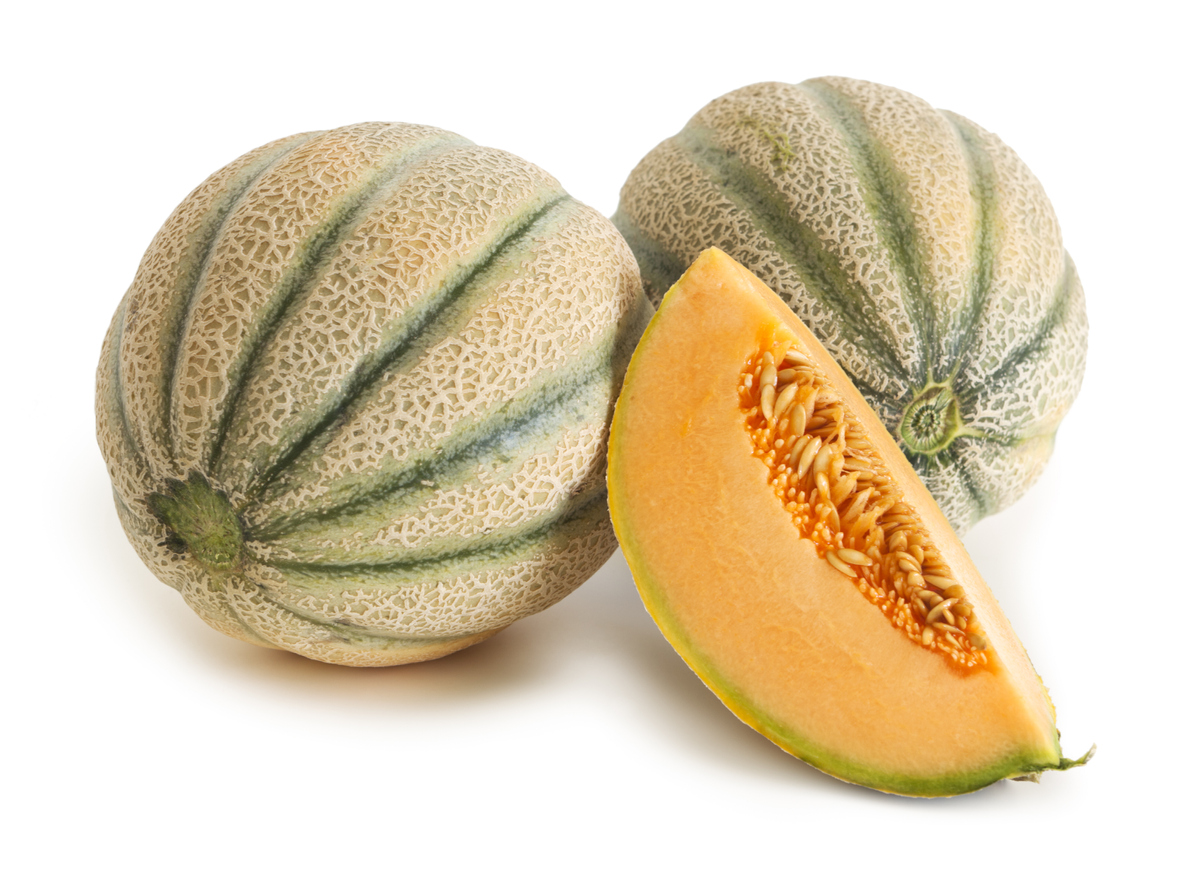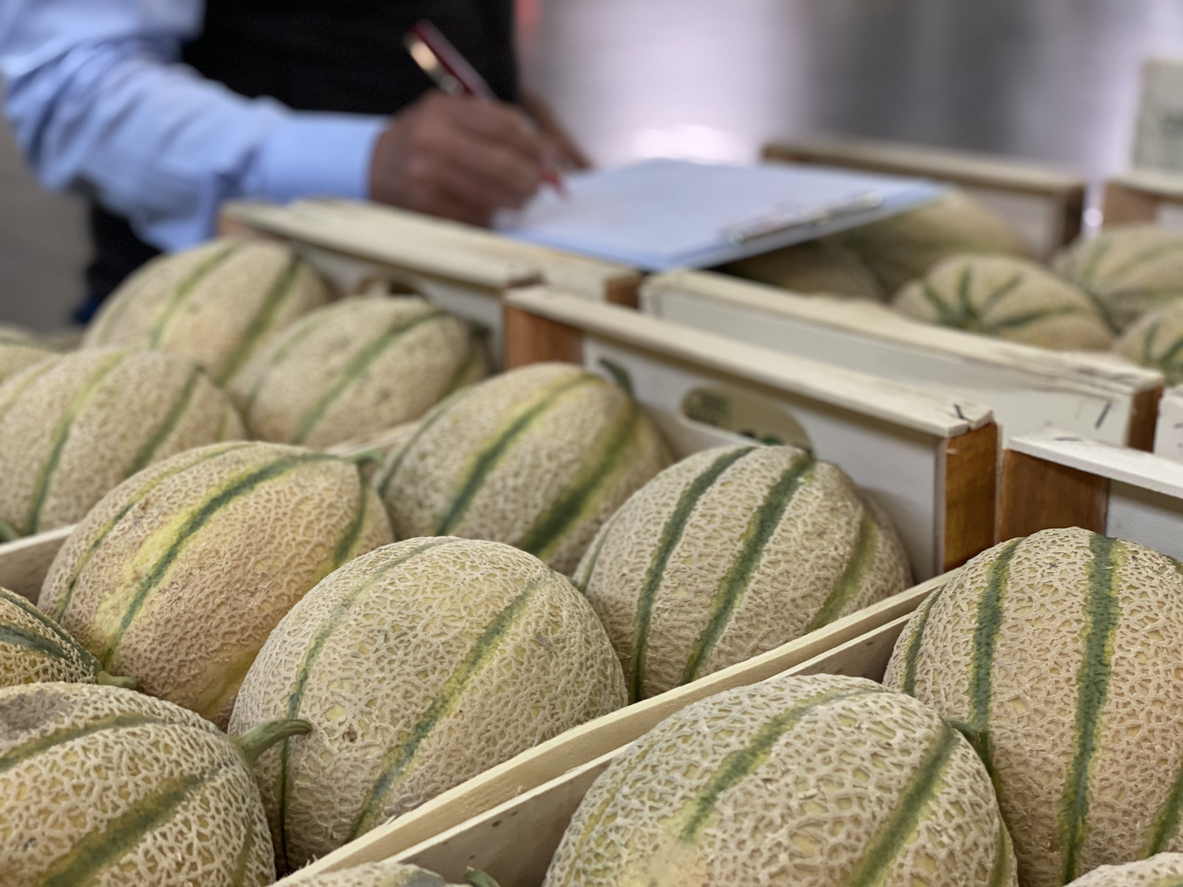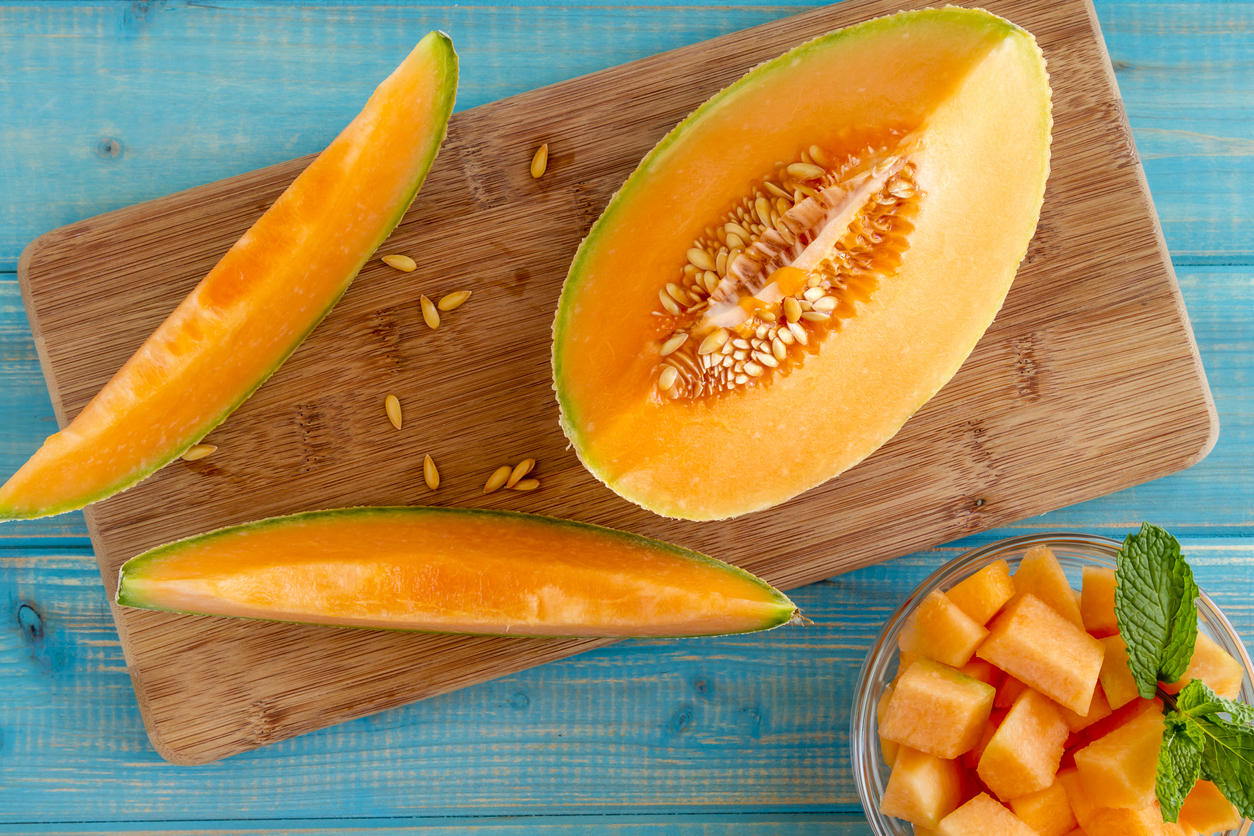Rockmelon
 Fresh fruit and vegetables are an important part of a healthy and nutritious diet.
Fresh fruit and vegetables are an important part of a healthy and nutritious diet.
However, fresh fruit, including rockmelons, can be hazardous if not prepared or stored properly. Rockmelons have been linked to several serious foodborne illness outbreaks in recent years. This page explains the safe food handling practices to follow when receiving, storing, and preparing rockmelon.
Bacteria is naturally found in soil and can transfer to the rockmelon skin as they grow on the soil. The skin of rockmelon has a net-like texture with grooves, making it difficult to clean.
Everybody is at risk of foodborne illness; however Listeria and Salmonella may cause very serious illnesses in vulnerable groups such as pregnant women, babies, the elderly and people with reduced immunity. Among these groups, the illness can be severe and life threatening.
Do
- wash hands before and after handling rockmelons
- keep cut rockmelon in the fridge at 5°C or below.
Do not
- use or eat rockmelon with skin that is dirty, cracked, bruised or decayed or damaged
- keep or eat rockmelon if it has been out of the fridge for more than 2 hours
- reuse knives, chopping boards and other kitchen equipment after cutting rockmelon until they have been throughly cleaned and sanitised.
Check
- the cleanliness of the storage container, packaging or food transport vehicle
- reject if the rockmelon skin is damaged as this may allow bacteria to enter the flesh
- If there are any noticeable signs of decay, bruising or damage (e.g. cracked skin), the rockmelon should be thrown away due to the increased risk of cross-contamination.

Clean
- wash hands thoroughly before and after handling rockmelon
- ensure all equipment and utensils such as cutting boards, knives and benches, are thoroughly cleaned with hot soapy water, rinsed and sanitised, after coming into contact with rockmelons
- equipment and containers should be able to be cleaned, sanitised and maintained to avoid the risks of cross contamination
- cutting knives and utensils should be kept in a good condition.
Storage and display
- when displaying whole or pre-cut rockmelon ensure rockmelon does not come into contact with other foods or equipment, to minimise the risk of cross-contamination
- areas used for storing or preparing rockmelon should be designed, constructed and maintained in a way to avoid the risk of cross contamination
- pre-cut rockmelon should be wrapped and packaged to avoid cross-contamination and kept at 5°C or below
- consumer handling information should provide specific directions for storage and use and include a ‘use-by’ date. For example, “refrigerated at 5°C or below.”
 Cutting or slicing rockmelon
Cutting or slicing rockmelon
When cutting rockmelon, it is important to remember that bacteria can be transferred to the flesh and cross contamination of surfaces and other food can occur.
- cut small batches more often rather than storing large batches for longer
- keep pre-cut rockmelon at 5°C or below to reduce the rate at which the bacteria grows
- cut melons may be displayed for a maximum of two hours without temperature control. They should be thrown away after two hours.
Legal obligations for food retailers
As a food retailer, you have an obligation under the Food Act 2006 and the Australia New Zealand Food Standards Code to ensure the rockmelons you sell are safe and suitable for human consumption. You are responsible for ensuring all employees have the skills and knowledge required to handle food safely.
Safe food handling practices described below should be followed to ensure that employees who handle rockmelons minimise the food safety risks.
- employees suffering from a disease or illness are at risk of contaminating food, should not be permitted to handle food.
- if there is a foodborne illness outbreak, records of, packaging and supplier (e.g. grower’s name and address, date harvested, lot identification), may help to isolate the source of contamination.


